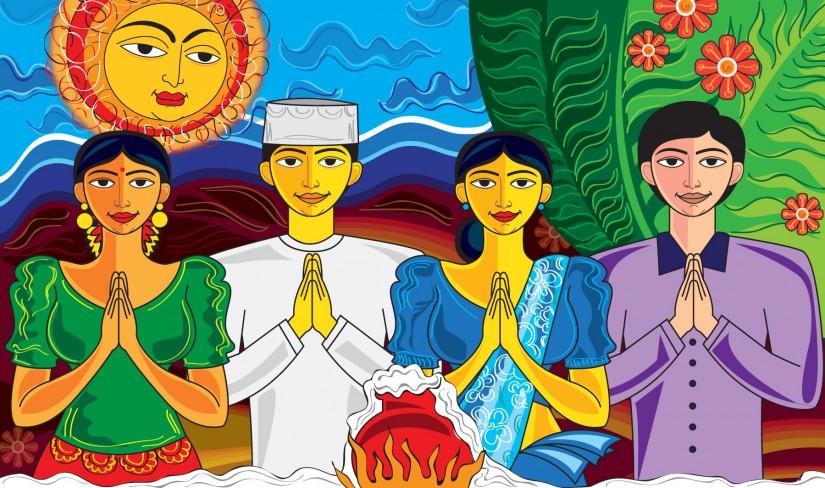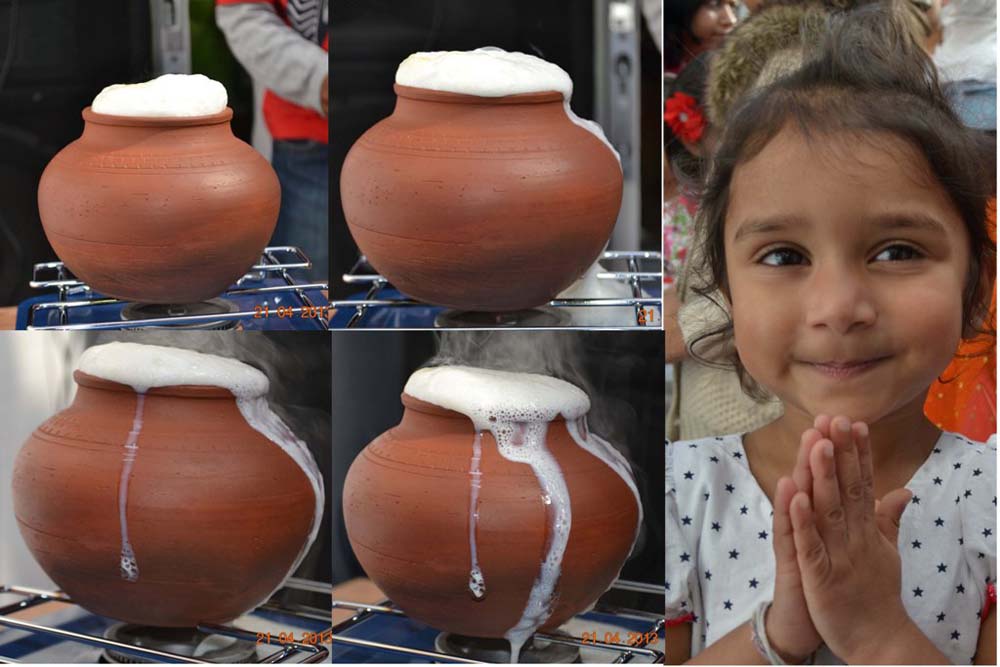Sinhala & Tamil New Year April 03 2016

Beneath the shades of a mango tree, lying coolly in the gentle breeze of the morning sun is the Koha (the Asian Koel) that lets out its reminiscent mating call, “Koo-ooo”. Yes, it is that time of year again, the Sinhala and Tamil New Year. ‘Aluth Avurudhu’ as it is known to the locals, plays a significant role in embracing the rich culture and religious history of this beautiful island nation and is always a festive time for recalibrating our senses and getting ready to push forward to another prosperous New Year.
As a country with a surprisingly long list of public holidays, one can easily wonder how anyone gets anything done but, the advent of ‘Avurudhu’ keeps everyone from school children to bank officials busy by preparing for a near week long holiday. The exact timing of the New Year isn’t as precise and reliable as the chime of the clock at midnight on the 31st. Instead, it relies on mysterious astrological interpretations which follow the movement of the sun from the Meena Rashiya (house of Pisces) to Mesha Rashiya (house of Aries). For the rest of us, this translates to a time generally between April 13 and April 14th. It also reflects the end of the harvest period by which the agrarian economy begins preparations to reap the benefits of their dedication to the land.
 As the auspicious time draws near, traditions encourage locals to refrain from materials pursuits and pursue time with their families, religion and history. A game of carrom with your well versed grandparents, would also suffice as a way to accomplish those traditions. The unmistakable rumble of firecrackers would often beckon in after the arrival of the New Year at which member of the family would light oil lamps, and begin cooking the traditional ‘Avurudhu’ meals. If you were lucky enough to delegate the task of helping your mother to grate coconuts, you’d probably be relaxing outside and preparing the brick stove to boil a pot of milk to mark the arrival of peace and happiness.
As the auspicious time draws near, traditions encourage locals to refrain from materials pursuits and pursue time with their families, religion and history. A game of carrom with your well versed grandparents, would also suffice as a way to accomplish those traditions. The unmistakable rumble of firecrackers would often beckon in after the arrival of the New Year at which member of the family would light oil lamps, and begin cooking the traditional ‘Avurudhu’ meals. If you were lucky enough to delegate the task of helping your mother to grate coconuts, you’d probably be relaxing outside and preparing the brick stove to boil a pot of milk to mark the arrival of peace and happiness. Kiri bath (milk rice) remains the staple of the table across the island and it is often accompanied by a jar of honey, a plate of jaggery and lunumiris (a spicy sambal paste). Besides burning and soothing your tongue with these delicacies, the table also offers a wide variety of sweet and savory items ranging from kokis (a crisp and light decorated ring from heaven), kavum (a small oil cake), Aluwa (a sweet flour, treacle and cashew based sweet), and boring bananas. Once you’ve had your fill and regret stuffing yourself too early with kiri bath, you pay respect to your elders with a bundle of bo leaves. If you are fortunate enough, they may return the favor with a great piece of life advice instead of an envelope of cash.
Kiri bath (milk rice) remains the staple of the table across the island and it is often accompanied by a jar of honey, a plate of jaggery and lunumiris (a spicy sambal paste). Besides burning and soothing your tongue with these delicacies, the table also offers a wide variety of sweet and savory items ranging from kokis (a crisp and light decorated ring from heaven), kavum (a small oil cake), Aluwa (a sweet flour, treacle and cashew based sweet), and boring bananas. Once you’ve had your fill and regret stuffing yourself too early with kiri bath, you pay respect to your elders with a bundle of bo leaves. If you are fortunate enough, they may return the favor with a great piece of life advice instead of an envelope of cash.
 Once you’ve happily digested everything you may often find yourself gathering with a couple of friends and cousins to take part in a multitude of traditional ‘Avurudhu’ games. Kotta Pora (pillow fight, yes but much more fun because you’re on pole), greased pole climbing, Kana mutti bindima (The Sri Lankan version of the Mexican piñata) and even an embarrassing Avurudhu Kumari pageant. All in all, the day is full of excitement and good fun.
Once you’ve happily digested everything you may often find yourself gathering with a couple of friends and cousins to take part in a multitude of traditional ‘Avurudhu’ games. Kotta Pora (pillow fight, yes but much more fun because you’re on pole), greased pole climbing, Kana mutti bindima (The Sri Lankan version of the Mexican piñata) and even an embarrassing Avurudhu Kumari pageant. All in all, the day is full of excitement and good fun.
This year, the New Year brings in a time for cultural and religious harmony. It highlights how far we’ve come as a multicultural society and propels us further into a future embraced with peace, love and happiness. Although, our national cricket team couldn’t make it past the semi-finals of the World Cup, they continue to bring us a message of hope and courage. As the Sri Lankan Cricket Captain, Sangakkara, once said, “I am Tamil, Sinhalese, Muslim and Burgher. I am a Buddhist, a Hindu, a follower of Islam and Christianity. I am today, and always, proudly SrI Lankan”. Suba Aluth Avurudhak!
